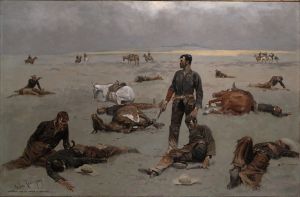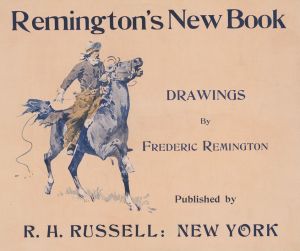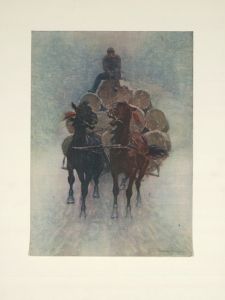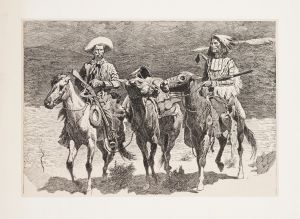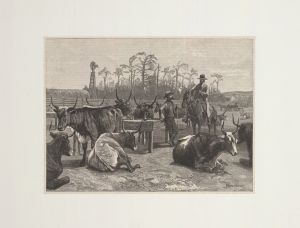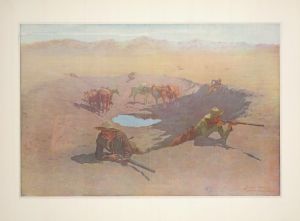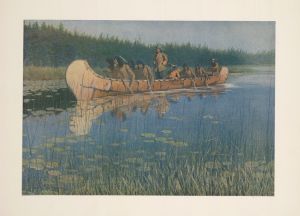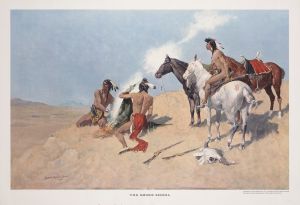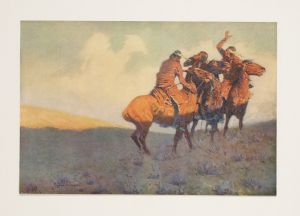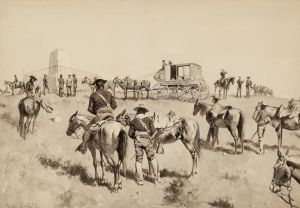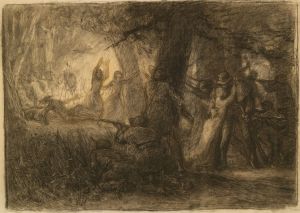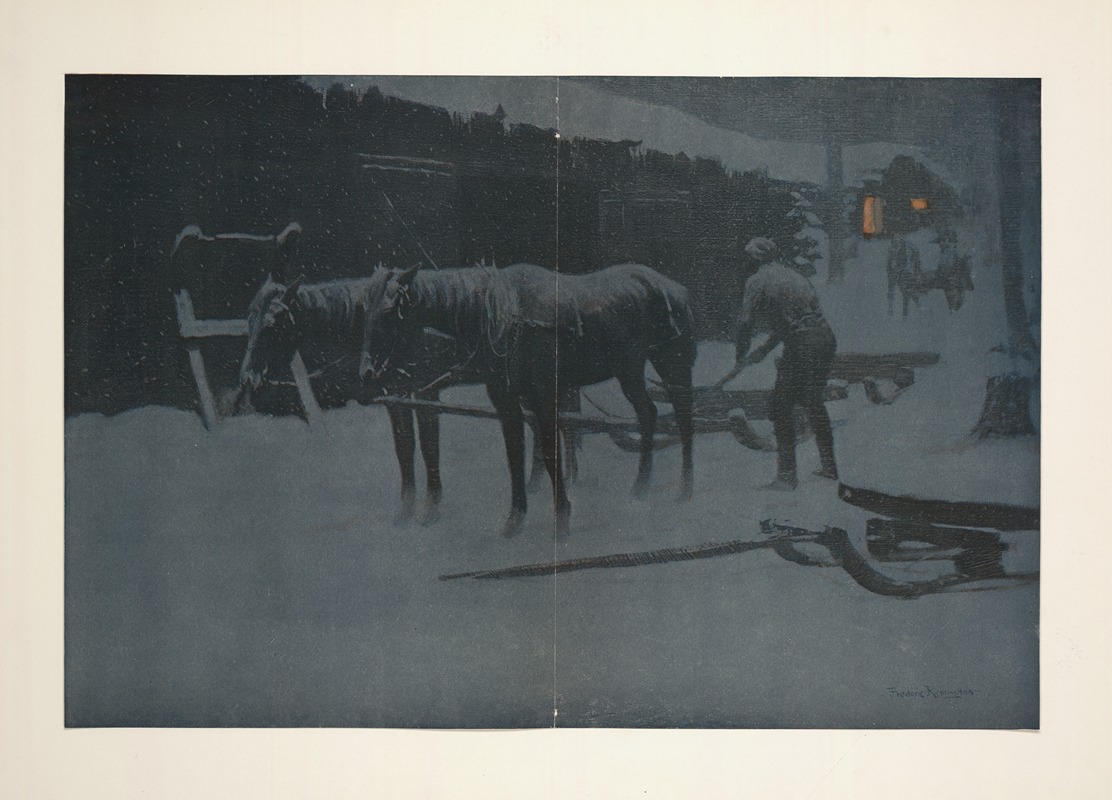
The End of the Day
A hand-painted replica of Frederic Remington’s masterpiece The End of the Day, meticulously crafted by professional artists to capture the true essence of the original. Each piece is created with museum-quality canvas and rare mineral pigments, carefully painted by experienced artists with delicate brushstrokes and rich, layered colors to perfectly recreate the texture of the original artwork. Unlike machine-printed reproductions, this hand-painted version brings the painting to life, infused with the artist’s emotions and skill in every stroke. Whether for personal collection or home decoration, it instantly elevates the artistic atmosphere of any space.
"The End of the Day" is a painting by the renowned American artist Frederic Remington, who is best known for his depictions of the American West. Remington was an influential figure in the late 19th and early 20th centuries, capturing the essence of the Western frontier through his art, which included paintings, illustrations, and sculptures.
Frederic Remington was born on October 4, 1861, in Canton, New York. He developed an early interest in art and the American West, which was fueled by his travels and experiences in the region. Remington's work is characterized by its dynamic portrayal of cowboys, Native Americans, soldiers, and the rugged landscapes of the West. His art played a significant role in shaping the popular image of the American frontier during his time and continues to influence perceptions of the era today.
"The End of the Day" exemplifies Remington's skill in capturing the mood and atmosphere of the Western landscape. Although specific details about the creation date and current location of this particular painting are not widely documented, it is consistent with Remington's thematic focus on the daily life and struggles of those who lived and worked in the West. The painting typically depicts a scene at dusk, a time when the day's work is done, and individuals or groups are returning home or setting up camp for the night.
In this work, Remington's use of light and shadow is particularly noteworthy. He often employed a palette that emphasized the natural colors of the Western environment, using earth tones and muted hues to convey the vastness and solitude of the landscape. The play of light at the end of the day, with the sun setting and casting long shadows, adds a sense of tranquility and reflection to the scene.
Remington's attention to detail and his ability to convey movement and emotion are evident in "The End of the Day." His figures are often depicted in realistic poses, with a focus on the authenticity of their attire and equipment. This commitment to realism was a hallmark of Remington's style and contributed to the enduring appeal of his work.
Throughout his career, Remington's art was widely published and exhibited, gaining him considerable fame and recognition. His illustrations appeared in popular magazines of the time, such as Harper's Weekly and Collier's, bringing the imagery of the American West to a broad audience. Remington's paintings and sculptures were also exhibited in major art galleries and museums, further cementing his legacy as a key figure in American art.
Frederic Remington passed away on December 26, 1909, but his work continues to be celebrated for its historical significance and artistic merit. "The End of the Day," like many of his other works, remains a testament to his ability to capture the spirit of the American West and its enduring allure.





